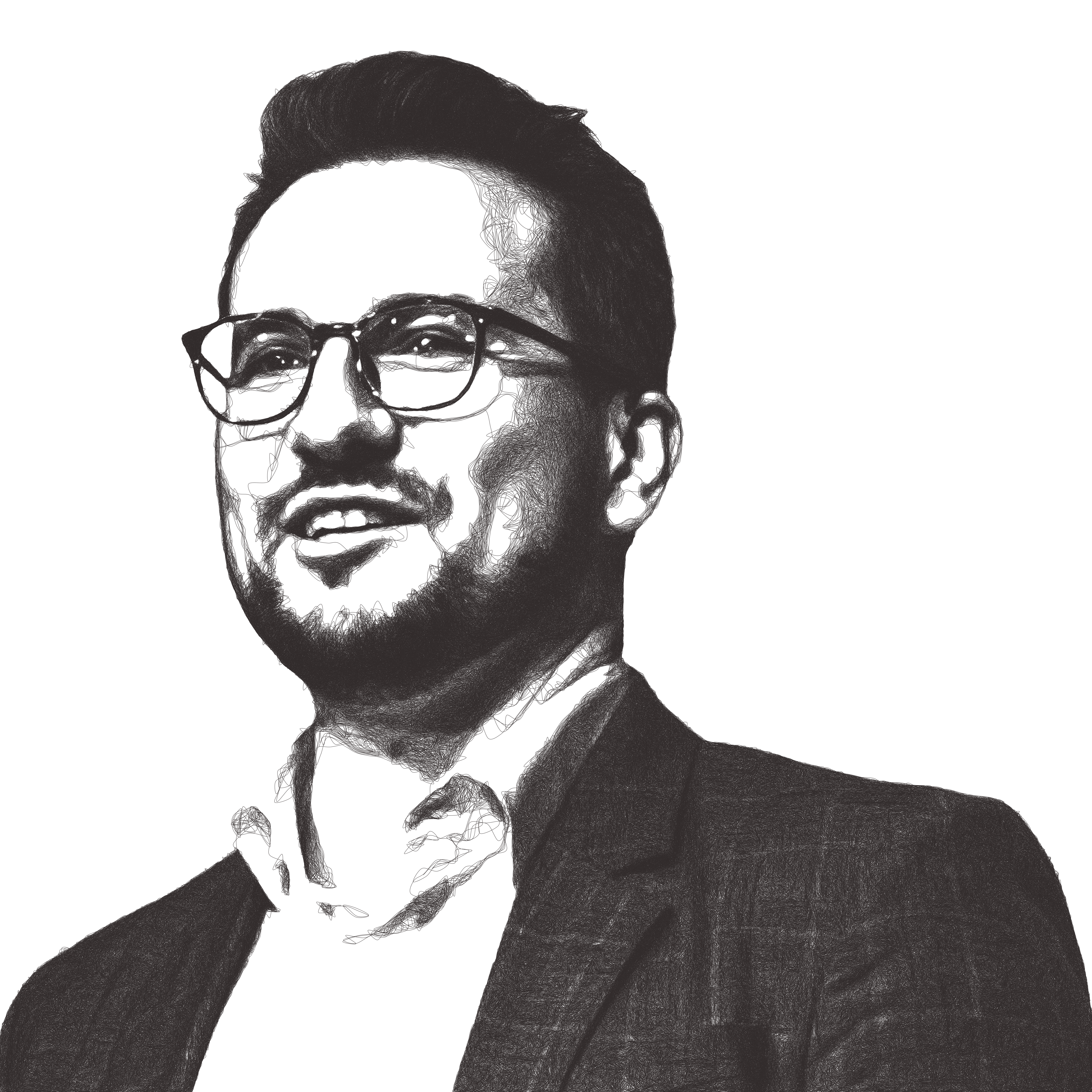Alexandru Tiliță is the co-founder and CEO of MatterWave, a company enhancing metal additive manufacturing with ultrasonic vibrations.

Tell us about yourself and your background leading up to MatterWave.
I’m originally from Romania. Since I was a child, I knew that I wanted to be a founder. I didn’t know exactly what that meant but I wanted to bring technology to life. I love talking and arguing and so I went to law school and engineering school at the same time. During my master’s degree in industrial engineering, I saw the enormous disruptive potential of metal additive manufacturing. I couldn’t understand why it wasn’t being used more widely, so I started a PhD to find out more.
I discovered that the key issue was durability. So I developed a technology that uses ultrasonic vibrations to control structures from the atomic level up. It pushes atoms close enough together that they start forming larger structures. This led me to founding MatterWave. Last year, we joined the HAX accelerator, and we’ve been building it there ever since.
A weekly dispatch featuring exclusive interviews with deep tech founders & a roundup of the most important deep tech news.
What are the key challenges with metal additive manufacturing?
The biggest challenge is that 3D printed metal parts from current generation technology simply aren’t as durable as traditional manufacturing components. If you use Computer Numerical Control (CNC) or Forging, parts will last for a million cycles of loading and unloading. With metal additive, even after post-processing, you’re getting only a tenth of that durability. So you can’t really rely on it for critical functional components. You can’t use it inside a jet engine, for example, because a failure will be catastrophic. That’s the largest problem preventing wider industry adoption and it’s what MatterWave is focused on solving.
Why are these components less durable?
Durability is low because 3D printing consists of two parts: heating and cooling. You heat a metal powder with a laser until it passes its melting point, usually about 2500-3000°F (around 1500°C). After you move the laser away, that liquid metal cools down and solidifies very quickly. Every 3D printer can control the heating part, but none can fully control the cooling part.
The crystal structure that forms as a result of the cooling has many cracks. The metal flash-freezes, like when you put a flower in liquid nitrogen. It becomes brittle and it shatters easily. That’s what happens at a small scale and due to some stress, it leads to cracks. Those cracks are one of the reasons why the durability is low.
How is MatterWave approaching this problem?
We use ultrasonics to control the atomic structure of the metal we’re 3D printing. This is something no one else can do. I discovered ultrasonics’ capability for this when applying them to manufacturing processes like electrode discharge machining, milling, and welding. We consistently achieved order-of-magnitude productivity improvements through containing a process called cavitation.
When material vibrates at certain frequencies, cavitation occurs. Gas bubbles in liquid begin to oscillate. Since liquids are incompressible while gases aren’t, pressure waves affect only the gas bubbles. It causes them to expand, contract, and eventually collapse, releasing powerful shock waves.
Cavitation was first identified as a problem in naval engineering, where it destroyed metal propellers. Engineers eventually learned to harness this effect productively. At Matterwave, we’ve adapted this principle, containing cavitation in a precisely controlled environment to use these shock waves to engineer metal’s atomic structure during the printing process.
Explain what the printing process looks like at a high level?
It’s similar to ultrasonic cleaners that push dirt from your rings or glasses. We just do it at the atomic level. To get a group of atoms to solidify, you have to push them together.
Think about it like you’re at a party and there’s a lot of people doing their own thing. There might be a few people dancing but if you put on the right music a few more people will start dancing. If there’s more people dancing, others will join in on the fun and eventually, most people might join the dance-floor.
It’s the same thing we’re doing with the atoms and molecules in the metal we’re 3D printing. We can make sure the metal starts solidifying earlier, like we’re turning on the music earlier. And because we control the atomic structure’s arrangement, we ensure the crystals are as large or small as needed, and in whatever shape we want. Having that control helps us avoid the causes of crack formation on the inside.
What is the current state of MatterWave’s technology?
We’re at TRL 6 (Technology Readiness Level 6). We’ve tested it in a lab setting and then tested it on an MVP prototype in the environment. Now we’re at the stage where we’re talking to metal 3D printing OEMs and service bureaus to integrate our technology into their existing printers.
How are others approaching the problem?
A lot of startups are using in-situ monitoring and finite element methods to try to understand the thermodynamics so they can compensate for cracking, delamination, and other issues. My perspective is that this approach is good since it helps reduce parameter development time and streamlines processes a bit. The barrier is that they’re not fully in control of the entire process. They’re looking at it passively by trying to tweak the tools they already have. They’re stuck in an optimization problem and optimizing for just a portion of the system because they don’t have the tools to optimize for the entire system.
Given your history, how do you feel about PhDs transitioning to startup founders?
I went into academia knowing full well that my goal was to create a technology I could commercialize. I’m happy I did because I’ve always considered doing a PhD to be the most difficult thing you can ever do. Then I became a startup founder and realized it was just good training.
It’s all about mentality and personality. I’ve met many brilliant academics who are disillusioned by academia, even though they would have loved to stay in it. I have friends who were passionate about theoretical physics, but because academia isn’t the easiest domain to find a job or do well in, they moved on to other things.
Academia can be an inhospitable place for PhDs, potential professors, postdocs, and everyone trying to pursue an academic career. I think that’s why we’re seeing a larger number of PhDs doing startups. I fully support this but I think we’re not doing it enough. About 95% of all research isn’t really commercialized, which represents a massive opportunity.
The most important thing I learned was never to listen to my professors. Joking aside, everyone has their own incentives. Scientists and academics have a particular incentive to go as deep as possible into a question or problem. Entrepreneurs, founders, and engineers understand that an 80% solution is better than a 100% solution because of the resources needed to get to that 80%. Don’t ask “why” endlessly. Always look at how concretely what you’re doing can impact the world at large.
How do you define deep tech?
Deep tech is a technology that has been in the process of development by the founders for five to ten years, before the startup even started. It’s all about the amount of effort, development, and research that has gone into the technology that is now being commercialized.
